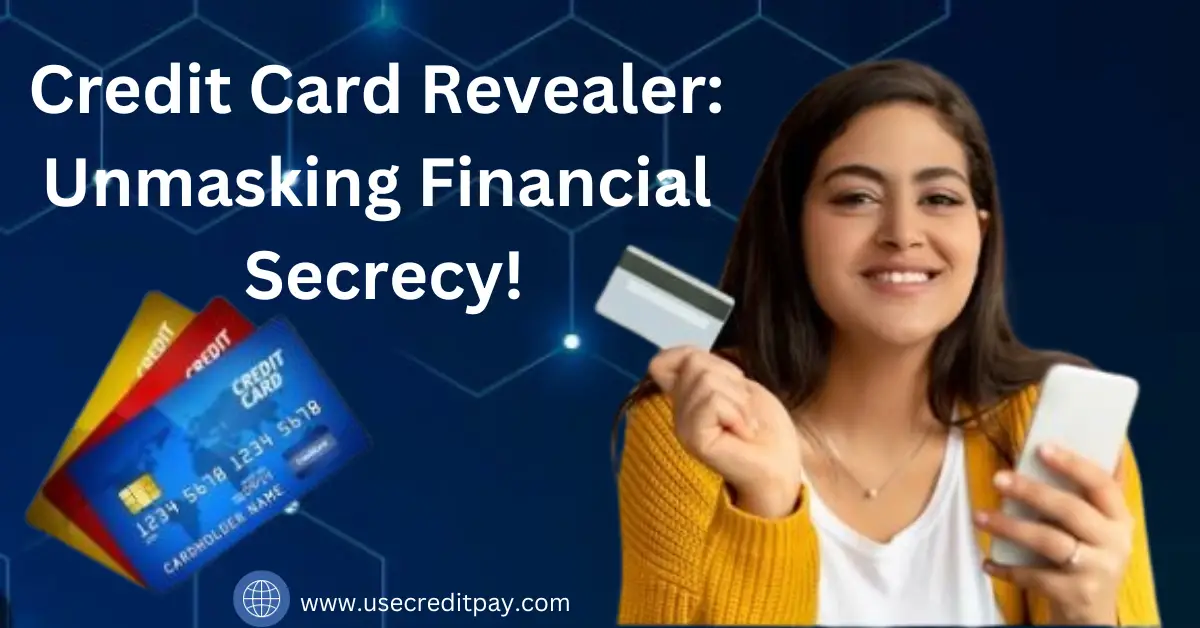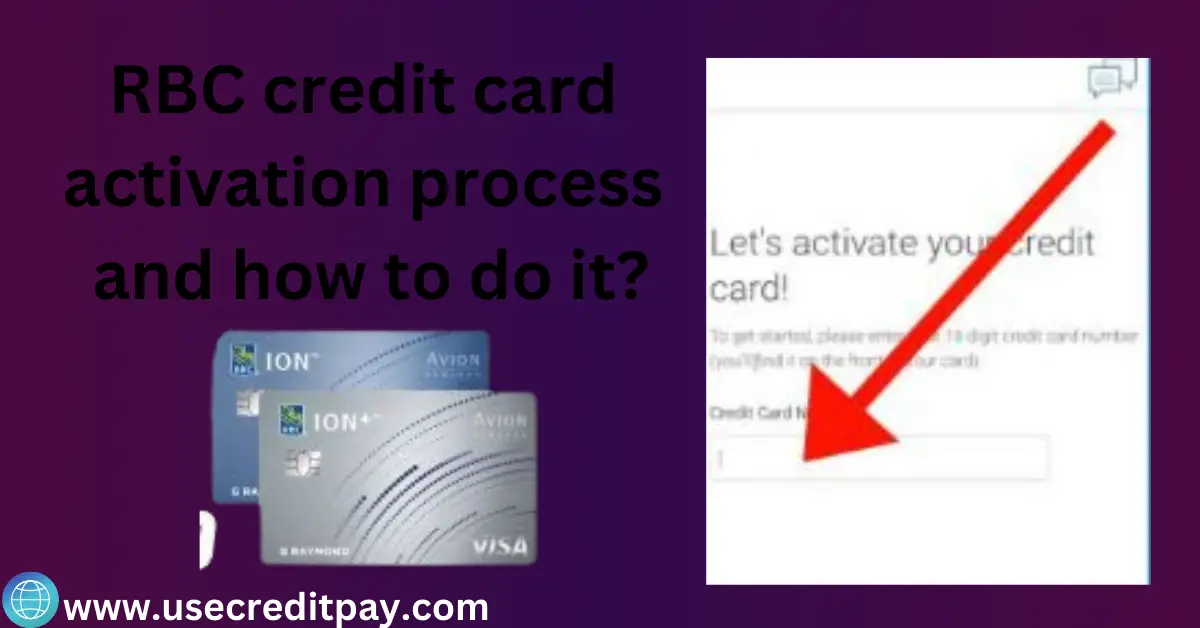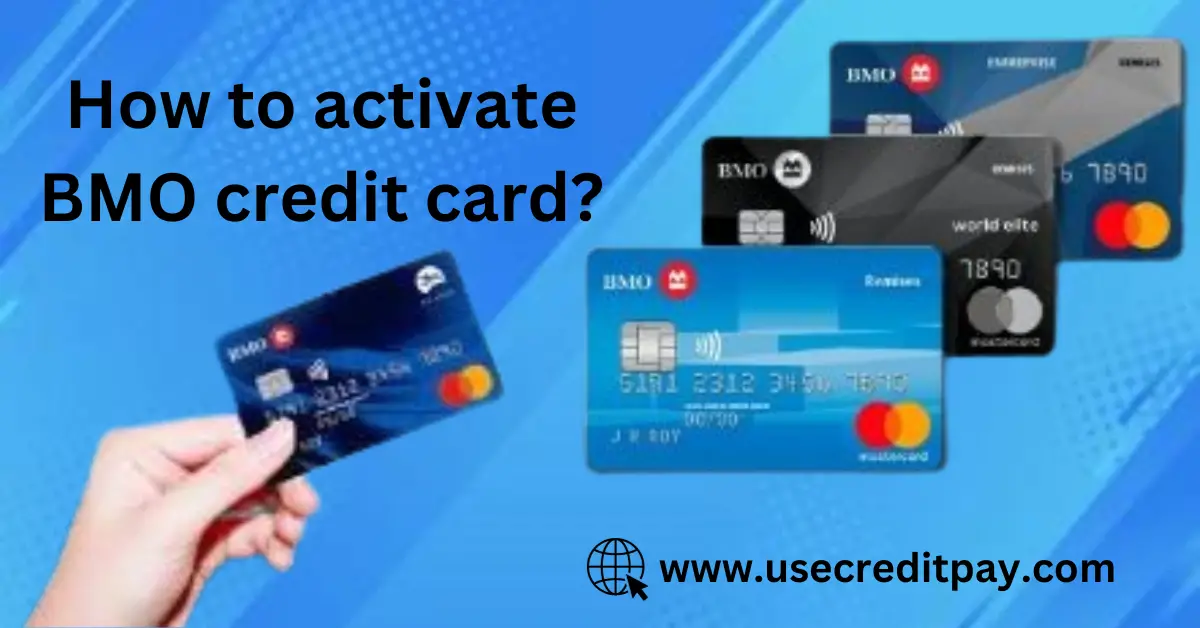A Credit Card Revealer is a potentially illegal tool used to expose credit card details. It poses significant security risks and breaches privacy laws.
Exploring the world of digital finance security is a tricky affair, especially when discussing tools like Credit Card Revealers. Such software or apps claim to provide users with the ability to uncover hidden or encrypted credit card information. This idea raises immediate red flags concerning both legality and ethics.
Responsible use of financial data is critical in the digital age, where identity theft and fraudulent activities are rampant. Consumers and businesses alike must prioritize protection against such invasive tools. Education around secure financial transactions and awareness of the dangers of Credit Card Revealers is essential to safeguard personal and financial privacy. Trust in digital transactions hinges on robust security measures and the responsible handling of sensitive data.
Introduction To Credit Cards And Financial Privacy
In an era where digital transactions are interwoven with daily life, understanding the intricacies of credit cards and the significance of financial privacy is paramount. Credit cards not only facilitate seamless purchases both online and offline but also embody a thread of sensitive financial information that demands protection. This blog post delves into the fundamental operations of credit cards, explores the imperative role of privacy in financial transactions, and sheds light on the innovative emergence of Credit Card Revealer tools aimed at ensuring security and transparency.
Understanding The Basics Of Credit Card Operations
The magic of credit cards lies in their sophisticated yet straightforward operational framework. At its core, a credit card is a physical or digital tool that gives access to a designated credit limit, provided by a financial institution. Here’s a breakdown of its typical functioning:
- A cardholder makes a purchase using their credit card.
- The merchant sends the transaction details to the acquiring bank.
- The acquiring bank requests authorization from the card network (Visa, MasterCard, etc.).
- The request is forwarded to the issuing bank for approval.
- Upon approval, the transaction is authorized, and funds are earmarked for transfer.
- The purchase amount is later settled between the banks, and the cardholder repays the issuing bank.
It’s integral that every stage of this process upholds the highest levels of security and confidentiality to protect against fraud and unauthorized usage.
The Role Of Privacy In Financial Transactions
Privacy in financial transactions is not just a luxury but a fundamental right and necessity. It safeguards individuals from identity theft, financial fraud, and unauthorized tracking of personal spending habits. Key elements contributing to robust financial privacy include:
- Encryption: Encrypting data to make it unreadable to unauthorized parties.
- Tokenization: Replacing sensitive data with non-sensitive equivalents.
- Secure Communication Channels: Ensuring data is transmitted securely.
- Strict Access Controls: Limiting access to sensitive information to authorized personnel only.
- Compliance with Regulations: Adhering to laws and standards like PCI DSS.
Together, these practices work to create a secure financial ecosystem where consumer confidence can thrive.
The Emergence Of Credit Card Revealer Tools
As we escalate our collective efforts towards ironclad financial privacy, a new breed of technology has surfaced: Credit Card Revealer tools. These tools are ingeniously designed to help verify the validity of credit card numbers without exposing actual details. They typically operate by utilizing algorithms like the Luhn formula to identify if a sequence of numbers could plausibly constitute a genuine credit card number. Such instruments are pivotal for:
- Consumer education on credit card security
- Businesses to verify card details without risking exposure
- Developers and testers in the financial industry
The proliferation of these tools signifies a step forward in financial privacy, allowing us to peel back a layer of risk without compromising the essence of credit card transactions.
The Mechanisms Behind Credit Card Revealer Tools
Stepping into the enigmatic world of credit card security, the utilization of Credit Card Revealer tools remains shrouded in mystery and intrigue. These powerful utilities serve the purpose of decrypting the concealed information within credit card numbers, disclosing the hidden data that lies beneath the surface. Understanding the mechanisms behind these tools is essential for grasping the complexities and responsibilities that accompany their use.
How Credit Card Revelers Work: A Technical Overview
Credit Card Revelers pierce through the layers of financial secrecy by employing advanced algorithms and pattern recognition. The process involves several technical steps:
- Analyzing the credit card number which adheres to the Luhn Algorithm—a standard verification check used to validate a variety of identification numbers.
- Detecting the card network through the identification of the IIN (Issuer Identification Number), which reveals the card issuer and network type.
- Implementing complex decryption protocols to unveil sensitive cardholder information, when legally and ethically permissible to do so.
The mechanism revolves around scrutinizing numeric sequences, where skilled use of mathematical permutations aids in the unveiling procedure of such confidential data.
Legality And Ethical Considerations Of Unmasking Financial Secrecy
The legality and ethics surrounding Credit Card Reveler tools form a critical framework. Their application touches upon:
- Data protection laws that govern the rightful access and use of personal financial information.
- Ethical obligations to use such tools strictly for valid and legal purposes, such as in the context of security assessments.
- Responsibility towards non-exploitation of revealed data, steadfast compliance with privacy norms, and stringent adherence to legal statutes.
The balance between technology’s capability and righteous use is paramount, as misuse could lead to grave legal repercussions and ethical violations.
Case Studies: Instances Where Credit Card Revealers Were Used
| Incident | Description | Outcome |
|---|---|---|
| Security Audit | Financial institution employs a Revealer Tool during a routine security audit to assess system vulnerabilities. | Identification of security flaws, followed by the implementation of stronger encryption mechanisms. |
| Fraud Investigation | Law enforcement utilizes the tool to trace and confirm fraudulent activity linked to a stolen credit card. | Successful apprehension of the perpetrator, prevention of further financial loss. |
| Educational Demonstration | A demonstration at a cybersecurity conference showcasing the tool’s capabilities in a controlled environment. | Enhanced awareness and understanding of credit card security measures among attendees. |
These case studies illustrate diverse scenarios where Credit Card Revealers act as instrumental devices in securing and fortifying financial data integrity against potential threats.
“` Please note, depending on the context, the actual capabilities and ethical use of such tools may vary. Moreover, creating or using software to reveal actual credit card information without authorization could be illegal and unethical. The above case studies and descriptions are provided for educational and illustrative purposes only.
Implications Of Unmasking Financial Secrecy
Discussing the Implications of Unmasking Financial Secrecy brings us to the forefront of an ongoing debate — the delicate balance between the privacy of individuals and the need for transparency in financial transactions. In an era where online transactions are ubiquitous, the technology to reveal credit card details raises questions that straddle ethical, legal, and practical realms. The tools known as Credit Card Revealers could be potent in combating fraud, but at what cost to privacy?
The Impact On Consumer Privacy And Security
The revelation of private financial information can shake the very foundation of consumer trust. Complete confidentiality with financial data serves as the bedrock of consumer privacy. Erosion of this trust could lead to:
- Identity theft: increased exposure to personal financial information heightens the risk of identity theft.
- Unauthorized transactions: a breach could result in funds being extracted without consent.
- Data mining: sensitive information could be processed to profile and target individuals with unwanted marketing.
Fraud Detection And Prevention: A Double-edged Sword
The use of a Credit Card Revealer comes with its inherent paradoxes. While designed to sniff out fraudulent activities, its effectiveness introduces new opportunities for misuse.
| Pros | Cons |
|---|---|
|
|
Stakeholders must tread carefully to benefit from these tools without infringing on individual rights.
Regulatory Responses To Credit Card Revealing Practices
Governments and financial regulators across the globe have started to respond to the challenges posed by credit card revealing practices. Notably:
- Implementation of stringent data protection laws to safeguard personal financial information.
- Introduction of guidelines that dictate the conditions under which credit card details can be revealed.
- Enforcement actions against entities that misuse financial revealing tools or fail to protect customer data.
This evolving landscape indicates that while innovation in credit card security is necessary, it requires careful navigation to protect consumers and maintain the integrity of financial systems.
Balancing Transparency With Privacy In Finance
In an era where financial transactions are virtually zipping across the globe in milliseconds, the debate over transparency and privacy in finance has never been more relevant. The introduction of tools like Credit Card Revealer applications has shed light on the critical need to strike a balance. These solutions aim to uncover and prevent fraud but could inadvertently compromise user privacy if not carefully managed. As we navigate this delicate equilibrium, several strategies and technologies come into play to enhance security without violating privacy norms.
Strategies For Protecting Financial Data
Financial institutions and individuals alike bear the responsibility of safeguarding sensitive data. Here are multiple strategies employed:
- Encrypted Transactions: Encryption is the gold standard for protecting data in transit, ensuring that even if intercepted, the information remains unintelligible.
- Two-Factor Authentication (2FA): Adding an additional layer of security helps in verifying the user’s identity beyond just a password.
- Regular Monitoring: Keeping a vigilant eye on account activities enables early detection of any unauthorized access or transactions.
- Education on Phishing Tactics: Empowering customers to recognize phishing schemes helps prevent unauthorized access to sensitive data.
Emerging Technologies And The Future Of Financial Secrecy
The future of financial secrecy lies in the innovative use of technology. Prominent trends include:
| Technology | Application in Finance |
|---|---|
| Blockchain | Facilitates transparent and tamper-proof record-keeping while maintaining anonymity. |
| Artificial Intelligence (AI) | Enhances detection of fraudulent patterns and improves risk management. |
| Biometric Security | Offers a personalized layer of security using unique physical characteristics. |
Data Anonymization techniques are also on the rise, ridding datasets of personally identifiable information to preserve user privacy.
The Role Of Education In Fostering Responsible Credit Card Use
Promoting responsible credit card use is foundational to maintaining a robust finance system. Effective educational strategies include:
- Implementing financial literacy programs that cover the basics of credit card usage.
- Seminars and Workshops by financial experts to disseminate best practices in credit card management.
- Online resources such as blogs, videos, and tutorials, which provide accessible guidance for safe credit card use.
- Interactive tools that simulate financial scenarios, helping users understand the consequences of their credit behavior.
By aligning these educational initiatives with technological advancements, the emphasis on responsible usage becomes a natural part of the financial ecosystem.
Navigating The Complex Landscape Of Financial Secrecy
The realm of financial secrecy can often feel like a vast, opaque puzzle – one where each piece represents a facet of the mystery that is financial privacy. Credit Card Revealers, amongst other tools, point to the growing complications and concerns surrounding our ability to protect sensitive information in the digital age. As we bring this discussion to a close, our focus shifts from the intricacies of concealment to the broad view of navigating this complex landscape, underscoring the importance of awareness and cautious practice for consumers and anticipating the evolving trends in financial security.
Summary Of Key Points Discussed
- The role of Credit Card Revealers and how they operate in revealing partial credit card information
- The ethical and legal considerations that accompany the use of such tools
- The potential risks to personal financial safety when data is not properly secured
- The importance of encryption and secure payment technologies to safeguard consumer information
Personal Responsibility And Best Practices For Consumers
With the advent of financial technologies, users must remain vigilant. It falls upon individuals to maintain strict oversight over their financial data. Employing best practices ensures one’s safety in the digital economy:
- Regularly monitor credit card statements to spot any unauthorized transactions early.
- Be cautious of sharing sensitive information online and utilize secure connections.
- Opt for credit cards with advanced security features, like one-time passwords and biometric scanning.
- Keep abreast of the latest scams and phishing tactics used to gain unauthorized access to financial data.
Future Trends In Credit Card Privacy And Security
As technology marches forward, the future of credit card privacy and security looks both promising and challenging. The financial industry continuously innovates, developing more sophisticated encryption methods and privacy-preserving technologies. These advancements signal a shift towards a more secure consumer experience:
| Trend | Impact |
|---|---|
| Tokenization | Reduces the risk of credit card fraud by replacing sensitive card details with a unique identifier. |
| Biometric Verification | Enhances security by using unique physical traits, such as fingerprints, to authenticate transactions. |
| Behavioral Analytics | Helps detect irregular patterns in transaction behavior to prevent unauthorized access. |
| Blockchain Technology | Potentially revolutionizes the way financial transactions are verified and secured. |
Adopting a forward-thinking stance, consumers and financial institutions alike should prepare for a future where personal data protection is paramount, while remaining adaptable to the dynamic changes that lie ahead in the realm of financial privacy and security.
Navigating the complex world of credit can be daunting. Our deep dive into credit card revealers aimed to demystify their uses and legality. Remember to prioritize security and ethical practices when handling sensitive information. As you move forward, keep informed and choose your financial tools wisely.







